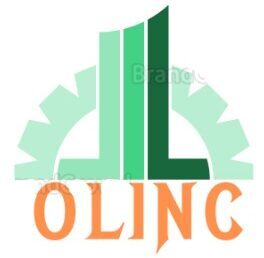RUBBER INSERTION SHEET IN KENYA
Olinc Products & Equipment Ltd offers this versatile and affordable grade of rubber in a range of thicknesses, roll widths and forms. It is available by the meter and in roll form as standard.

A rubber insertion sheet, also known as fabric-reinforced rubber sheet or cloth-inserted rubber sheet, is a type of rubber sheet that is reinforced with one or more layers of fabric or cloth. This reinforcement enhances the physical properties of the rubber, making it more durable and resilient.
Features of Rubber insertion sheet in Kenya
1. Reinforcement: The primary feature of rubber insertion sheets is the presence of fabric reinforcement. Common fabrics used include cotton, nylon, polyester, or a combination of these materials.
2. Thickness Options: These sheets are available in various thicknesses, allowing for customization based on specific application requirements.
3. Durability: The fabric reinforcement improves the tear resistance, tensile strength, and overall durability of the rubber sheet.
4. Temperature Resistance: Rubber insertion sheets generally exhibit good resistance to moderate temperatures, depending on the specific rubber compound used.
5. Flexibility: Despite the reinforcement, these sheets maintain a degree of flexibility, allowing for versatile applications.
Applications of Rubber insertion sheet in Kenya
1. Gaskets and Seals: Rubber insertion sheets are commonly used in the fabrication of gaskets and seals for various industries. The reinforcement enhances the sealing properties and durability.
2. Conveyor Belts: The sheets are utilized in the production of conveyor belts, where the fabric reinforcement provides strength and stability.
3. Expansion Joints: In applications requiring flexibility and resistance to movement, such as expansion joints in piping systems, rubber insertion sheets are used to create a durable and flexible seal.
4. Automotive Components: These sheets find applications in the automotive industry for manufacturing components such as diaphragms, gaskets, and seals.
5. Industrial and Construction: Rubber insertion sheets are employed in various industrial and construction applications where a combination of flexibility, strength, and resilience is required.
6. Vibration Isolation: In some cases, rubber insertion sheets are used for vibration isolation pads to reduce vibrations and noise in machinery.
Advantages of Rubber insertion sheet in Kenya
1. Strength and Tear Resistance: The fabric reinforcement significantly enhances the strength and tear resistance of the rubber sheet, making it suitable for applications where these properties are crucial.
2. Impact Resistance: The combination of rubber and fabric provides impact resistance, making these sheets suitable for applications where mechanical forces are involved.
3. Flexibility and Conformability: Rubber insertion sheets maintain flexibility and conformability, allowing them to adapt to uneven surfaces.
4. Abrasion Resistance: The fabric reinforcement improves the abrasion resistance of the rubber, extending the sheet’s lifespan in applications where wear and friction are factors.
The thicknesses and temperature range of rubber insertion sheets in Kenya can vary depending on the specific type of rubber compound used and the intended application. Different rubber compounds have distinct temperature resistance and mechanical properties.
Thicknesses: Rubber insertion sheets are available in a range of thicknesses to suit various applications. Common thicknesses may include:
– Thin Sheets: These can range from 1.5 mm to 3 mm and are often used for applications where flexibility and conformability are critical.
– Medium Thickness: Sheets in the range of 4 mm to 6 mm are considered medium thickness and are suitable for a variety of applications, including gaskets and seals.
– Thicker Sheets: Thicknesses exceeding 6 mm are considered thick sheets and are used for applications that require additional strength, such as conveyor belts or heavy-duty gaskets.
*It’s important to select the appropriate thickness based on the specific requirements of the application, taking into consideration factors like pressure, mechanical stress, and the need for insulation.
Temperature Range: The temperature resistance of rubber insertion sheets is influenced by the type of rubber compound used in their manufacture. Here are general temperature ranges for common rubber types:
1. Natural Rubber (NR): Typically has a temperature range of approximately -50°C to +70°C (-58°F to +158°F).
2. SBR (Styrene-Butadiene Rubber): Generally has a temperature range of about -40°C to +100°C (-40°F to +212°F).
3. Neoprene (CR): Offers better resistance and can withstand temperatures in the range of -40°C to +120°C (-40°F to +248°F).
4. EPDM (Ethylene Propylene Diene Monomer): Exhibits excellent heat resistance and can endure temperatures ranging from -40°C to +120°C (-40°F to +248°F).
5. Nitrile (NBR): Provides good resistance to higher temperatures and is effective in the range of -40°C to +120°C (-40°F to +248°F).
6. Viton (FKM): Known for high-temperature resistance and can withstand temperatures from -20°C to +200°C (-4°F to +392°F) or higher, depending on the grade.

Talk to us
Have any questions? We are always open to talk about your business, new projects, creative opportunities and how we can help you.
